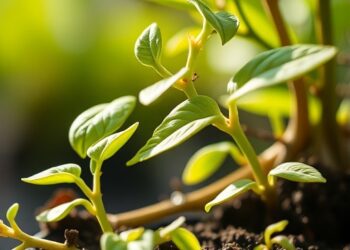Wildfires can damage crops, even if flames come nowhere near the plants. One outcome can be an unpleasant flavor and smell of wine that is made from grapes exposed to smoke. But researchers report in ACS’ Journal of Agricultural and Food Chemistry that they have developed a way to lessen this smoke taint to improve the palatability of the wine.
Wildfires can damage crops, even if flames come nowhere near the plants. One outcome can be an unpleasant flavor and smell of wine that is made from grapes exposed to smoke. But researchers report in ACS’ Journal of Agricultural and Food Chemistry that they have developed a way to lessen this smoke taint to improve the palatability of the wine.
Volatile compounds are responsible for many of the appealing aromas and flavors of food and beverages, including wine. These compounds come from the grapes themselves, as well as during the fermentation and aging processes. But not all volatile compounds present in wine are desirable: Some, produced by bacteria or yeast, smell like nail polish remover, rotten eggs, burnt rubber or onions. And if grapes absorb volatile compounds from wildfires, the resulting wine can take on a disagreeable smoky, ashy or medicinal character that compromises quality and reduces value. Producers use a variety of adsorbents to remove these unpleasant compounds from wine. However, these techniques can also remove desirable constituents that contribute to the beverage’s color, bouquet and flavor. So Kerry Wilkinson and colleagues decided to investigate whether the volatile compounds responsible for smoke taint could be selectively removed with the aid of molecularly imprinted polymers (MIPs).
MIPs are synthetic materials that can bind to one or more target compound. The researchers hoped to use the polymers to fish the smoky substances out of wine, while leaving the tasty and visually appealing components in place. The team added beads made of MIPS — either contained in muslin or mesh bags or floating freely in the liquid — and then used chemical analysis, as well as taste-testing panels of experts, members of the public, students and staff to evaluate the results. In some cases, the MIPs were regenerated by rinsing them after extraction to remove the smoke compounds, enabling them to be reused.
In terms of improving the wines’ sensory characteristics and removing unpleasant volatile phenols, the researchers found that adding MIPs to wine after fermentation was more effective than adding MIPs during fermentation. In addition, regenerating the MIPs generally enhanced removal of smoke volatile compounds. Although the MIPs also adsorbed some desirable compounds associated with aroma, flavor and red wine color, the researchers say the project showed that the method can be used successfully to reduce the perception of smoke taint.
The authors acknowledge funding and support from the Australian Government as part of a Cooperative Research Centre Project; Wine Australia; Metabolomics South Australia, which is funded through Bioplatforms Australia Pty Ltd.; the National Collaborative Research Infrastructure Strategy; and the South Australian State Government. One author declared a potential conflict of interest as an employee of amaea.
###
The American Chemical Society (ACS) is a nonprofit organization chartered by the U.S. Congress. ACS’ mission is to advance the broader chemistry enterprise and its practitioners for the benefit of Earth and all its people. The Society is a global leader in promoting excellence in science education and providing access to chemistry-related information and research through its multiple research solutions, peer-reviewed journals, scientific conferences, eBooks and weekly news periodical Chemical & Engineering News. ACS journals are among the most cited, most trusted and most read within the scientific literature; however, ACS itself does not conduct chemical research. As a leader in scientific information solutions, its CAS division partners with global innovators to accelerate breakthroughs by curating, connecting and analyzing the world’s scientific knowledge. ACS’ main offices are in Washington, D.C., and Columbus, Ohio.
Registered journalists can subscribe to the ACS journalist news portal on EurekAlert! to access embargoed and public science press releases. For media inquiries, contact newsroom@acs.org.
Note: ACS does not conduct research, but publishes and publicizes peer-reviewed scientific studies.
Follow us: X, formerly Twitter | Facebook | LinkedIn | Instagram
Journal
Journal of Agricultural and Food Chemistry
Article Title
“Amelioration of Smoke Taint in Wine via Addition of Molecularly Imprinted Polymers During or After Fermentation”
Article Publication Date
2-Aug-2024




